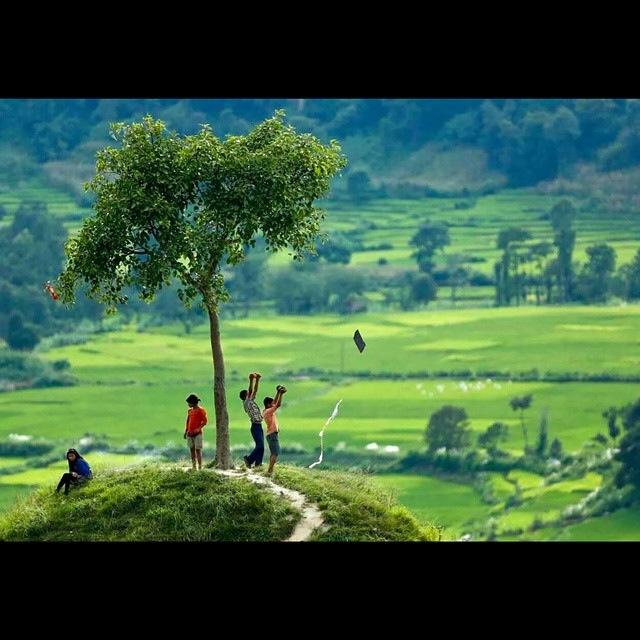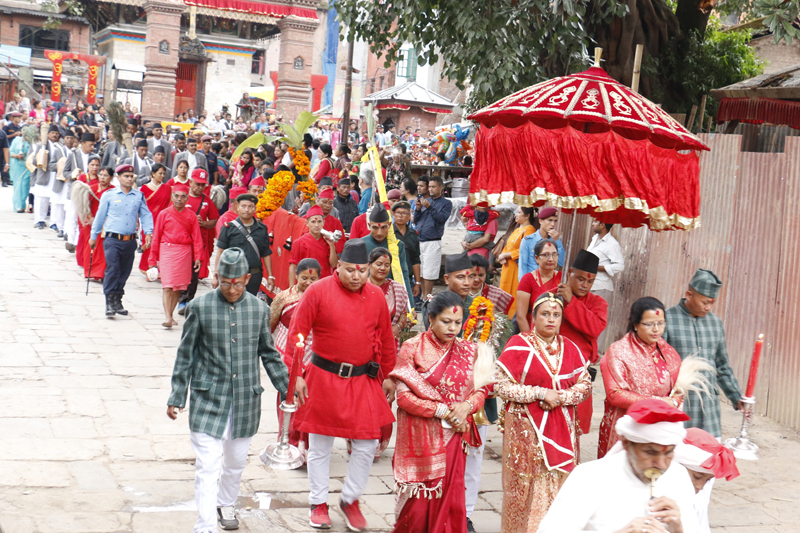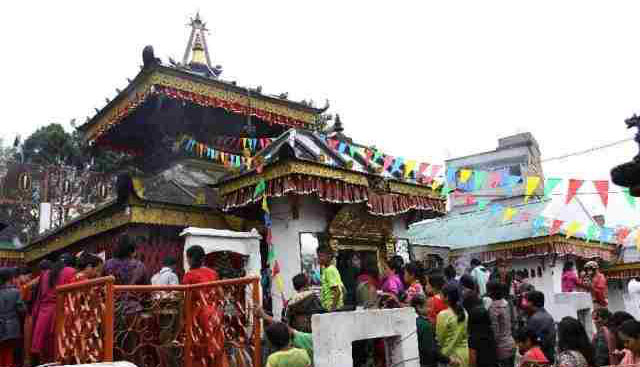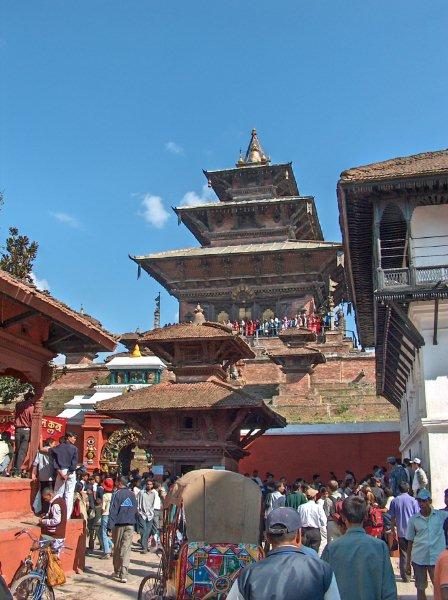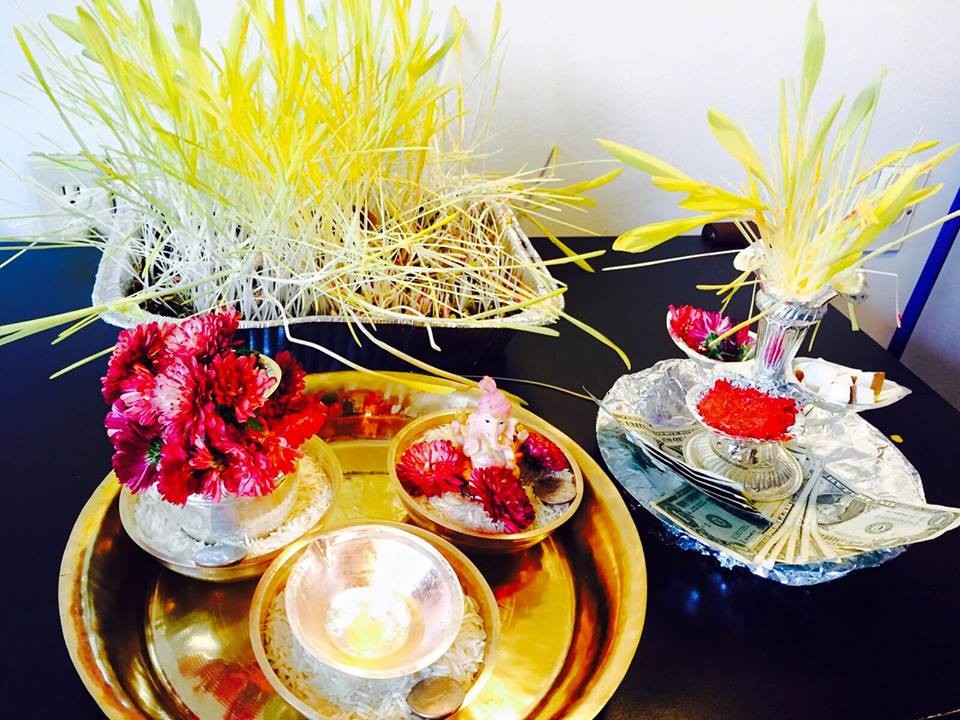Dashain is by far the longest and the most auspicious time of the year which is celebrated throughout the country by the people of every castes group. The festival generally falls in the month of September/ October as per the Georgian calendar. It is that time of the year when sorrows, grief and hardships are forgotten and families reunite and celebrate the happiness together. The festival is celebrated in order to honor goddess Durga. During these days people worship goddess Durga and all her manifestations are worshiped with innumerable pujas, abundant offerings and thousands of animals are sacrificed as a part of showing their devotion towards the goddess.
Ghatasthapana
The first day of the festival is Ghatasthapana. During this day the kalash of the holy water is established in the puja ghar of every household. 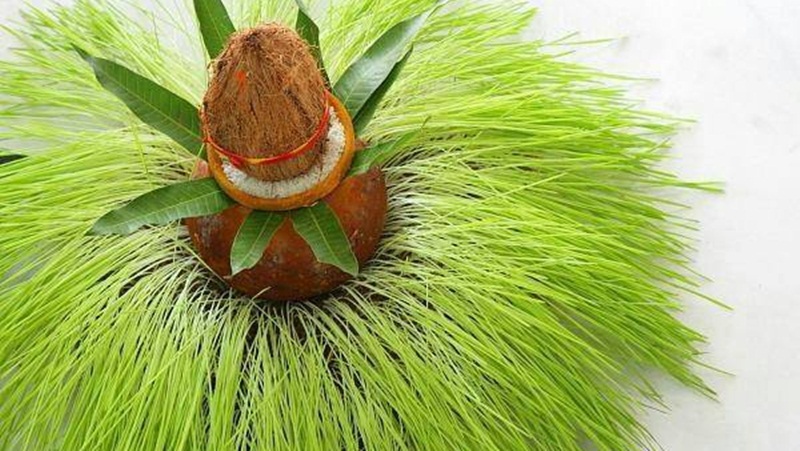 The Ghatasthapana day falls on the first day after the no-moon day (the bright forthright) of the Ashwin month of Bikrarm Sambat Calendar.On this day the kalash, (holy water vessel) symbolizing Goddess Durga is placed in the prayer (pooja) room. The pot is either made up of clay or metal. The kalash is filled with holy water and covered with cow dung on to which seeds is spread to decorate it. The plant which grow big in 10 days is called Jamara.
The Ghatasthapana day falls on the first day after the no-moon day (the bright forthright) of the Ashwin month of Bikrarm Sambat Calendar.On this day the kalash, (holy water vessel) symbolizing Goddess Durga is placed in the prayer (pooja) room. The pot is either made up of clay or metal. The kalash is filled with holy water and covered with cow dung on to which seeds is spread to decorate it. The plant which grow big in 10 days is called Jamara.
As a preparation of this festival people clean their houses, decorate it as an invitation to the mother goddess Durga, so that she might visit and bless the house with the good fortune. All the schools, colleges and offices experience holidays during this festivals. Mainly the children enjoy this festival by flying the kites, playing swings and feasting. People working and studying in the valley returns back to their villages and celebrate this festival with their family and loved ones. Amongst the 15 days of festival the seventh day (Phulpati), eight day (Asthami), ninth day (Nawami) and the tenth day (Dashami) are considered more auspicious.
Phulpati
Of the ten days of Dashain festival, Phulpati occurs on the seventh day. The navapatrikad (flower and leaves) are carried inside the “Dashain Ghar” (a special room dedicated for the festivals and religious ceremonies) or in the room where goddess Durga is worshipped. The royal kalash filled with holy water, banana stalks, jamara (the yellow grass sewed on the day of Ghatasthapana) and sugarcane tied with the red cloth are carried by the brahmans along way from Gorkha the ancestral home of Shah kings. This festival occurs at Tundikhel (the big parade ground at the heart of Kathmandu). There a majestic display of the Nepalese Army is held. Guns are fired and the entire valley echoes with the resonance sound of it. The firing continues for ten to fifteen minutes to honor the Phulpati and this process is named as “Phulpati Badai”. With this the dashain feasting starts.
Durga Puja ‘Astami’
The eighth day is called the 'Maha Asthami'. The favor of worship and sacrifice to Durga and Kali increases. On this day many orthodox Hindus will be fasting. Sacrifices are held in almost every house throughout the day. The night of the eighth day is called 'Kal Ratri', the dark night. Hundreds of goats, sheep and buffaloes are sacrificed in the mother goddess temples. In the darkness of the night Durga temples, army barracks, and old palaces all over Nepal hold sacrifices for the mother goddess. The sacrifice continues till dawn. The old palace in Basantapur Hanuman Dhoka, is active throughout the night with worships in almost every courtyard. People visit various temples of goddess Durga with various offerings as devotion. Tourists could see the excitement of the people and the long queues outside the temples from the morning dawn to the evening. While the puja is being carried out great feasts are held in the homes of common people where large amount of meat are consumed.
Nawami
The ninth day is called ‘Nawami’, a day before the real Dashain. The Taleju temple at Hanuman Dhoka is opened for the public on this day. The temple remains closed to public for the rest of the year. Thousands of people go and pay their respect to the goddess this day. Temples of mother goddess are filled with people from dawn till dusk. On this day the official military sacrifices are held in the 'Kot' courtyard at Hanuman Dhoka. The government allows foreigners to witness this function so hundreds of tourists eagerly gather here. Animals mostly black buffaloes are slaughtered by hundreds, to honor Durga (the goddess of victory) to seek her blessing. Military bands play war tunes, guns boom and officers with beautifully decorated medals in full uniform stand there. When the function ends the courtyard is filled ankle deep with blood. On this very day the god Vishwas Karma, the God of creativity is also worshiped. All factories, vehicles, any machinery instruments and anything from which we make a living are worshiped. In this day, animals are sacrificed in every house. People clean their vehicles and sacrifice animals or eggs for safe journey and protection for vehicles throughout the year. The entire day is colorful.
Dashami
The tenth day of the Dashain festival is “Dashami” which is taken as the victory day of Goddess Durga over a demon. On this day, the relatives living far apart gather at one place to receive tika (a mixture of rice, yoghurt and the vermilion powder) from their elders. Elders put this tika and jamara (the yellow grass which is sewn in the Ghatasthapana) on the forehead of younger relatives to bless them with prosperity in the upcoming years along with small amount of money along with the blessings called as “Dakshina”. On this very day people also visit “Kumari” the only living goddess in the world situated in the heart of Hanuman Dhoka Durbar Square to get the blessings in the form of tika.

